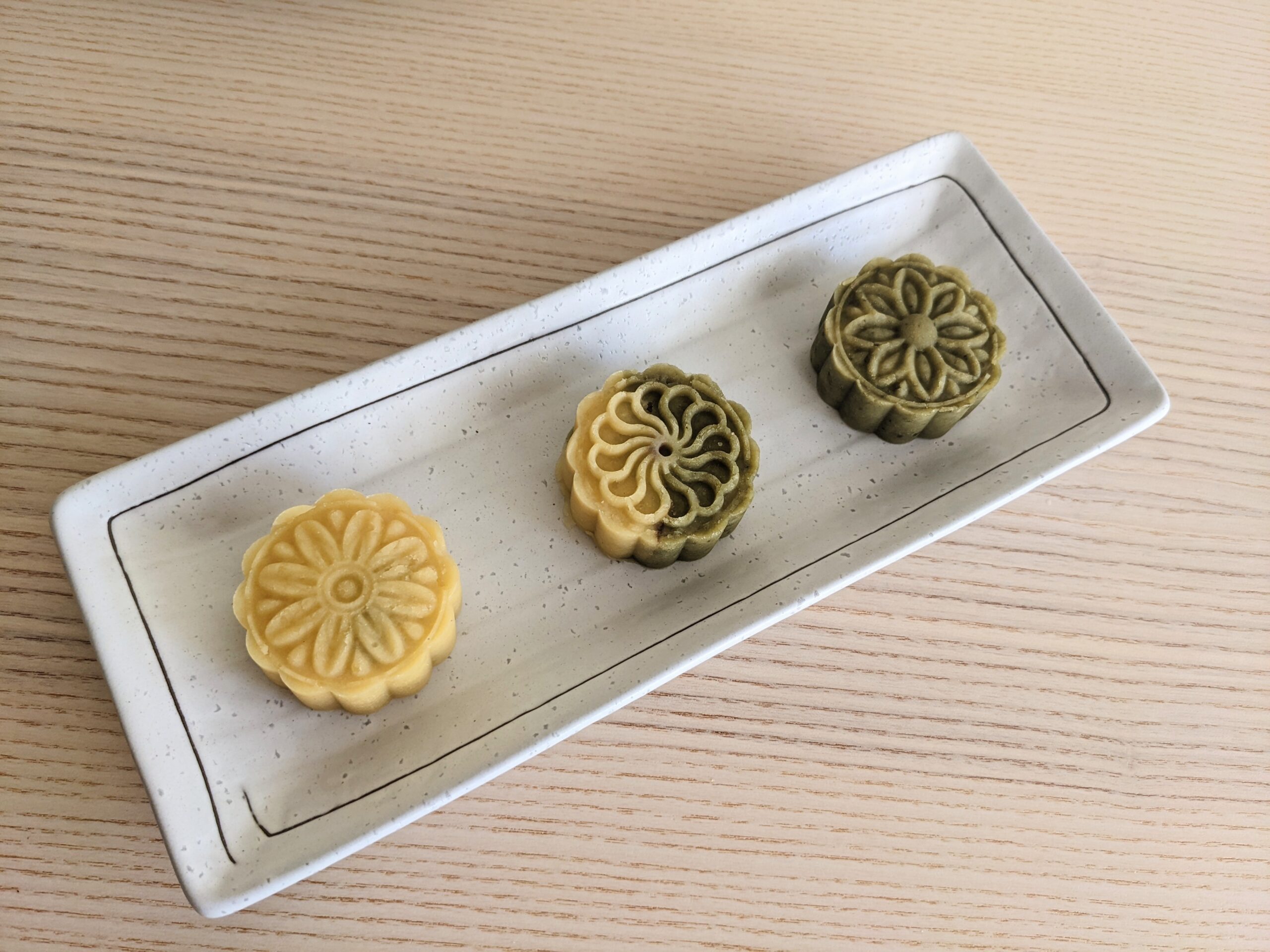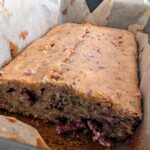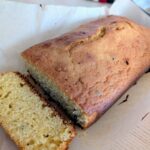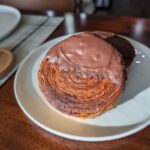Potluck time with friends for a birthday party again. Two years ago, I made coconut chocolate layer cake; this time, I do not have cake carrier and want to share something different with friends and introduce them to a more traditional Chinese dessert, hence choosing mung bean pastry.
At first I thought mung bean pastry, with steamed mung bean, would be much healthier; it turns out mung bean pastry does use quite a lot of fat (butter) and sugar / sweetener to be delicious! No dessert is innocent I guess haha!
QUICK TAKEAWAYS
- steaming mung bean rather than boiling will make the dough less moist and easier to form, remove from mold
- sweetness can come from honey, sugar, maltose or condense milk. These are thick rather than “liquidy” sweetener and again, make dough easier to form
- if want to add color or additional flavor to mung bean dough, can mix in a few grams of matcha powder, ube powder or a few drops of essence
RECIPE
~25 mung bean cakes
- 300g mung bean (can buy a bag of mung bean without skin from store)
- 100g butter
- ~80g honey / maltose / condense milk combo
- red bean paste (store bought for convenience)
- ~5g matcha powder
STEP 0: wash 300g mung bean till water is no longer “yellow”, then add in 3-5x water, soak overnight in fridge. This step softens the mung bean, easier for quick steaming tomorrow
STEP 1: (next day) sieve out water, transfer mung bean to a plate and steam over low-medium heat for 45mins. At the end of steaming, mung bean should be easily crushed like powder


easily crushed after steaming
STEP 2: use stand mixer to crush all steamed mung bean
STEP 3: over low heat, melt ~100g butter (1/3 of mung bean weight, unfortunately it is quite a lot of butter)
- buttery content helps get cake out of mold, otherwise dough might stuck on wall of mold. Butter of course also gives the fragrance, smooth texture
STEP 4: transfer mung bean powder into pan with butter, mix and pan fry over low heat for 3-5mins. Since mung bean powder is quite dry just from steaming, all the butter could be soak in and will see mung bean dough texture, color change

before 
after
STEP 5: turn off heat, add in ~80g honey, maltose, condense milk. Could be a combination of all three, or honey + condense milk, maltose + condense milk. If only add 80g condense milk, it might be a bit too wet and too sweet. Taste while adding in these sweeteners. After blending them all in dough, the dough should be moist enough that when pressed down, dough holds up together rather than like powder form at the end of step 2 after stand mixer
STEP 6: if want mung bean pastry to have other color, separate mung bean dough, add in powder or essence, mix well. Set all dough aside to cool down before molding
STEP 7: squeeze red bean paste out of package’s cut corner as filling. Each filling should weight around 5g, does not need to be super precise. Can use more filling as well, then need to cut down dough’s weight. The whole mung bean pastry should weigh 30g, including red bean paste filling
STEP 8: separate mung bean dough into balls weight of (30g-filling weight) each
STEP 9: spilt each dough ball into half, use thumb to press down a hole in one half of dough, place red bean paste filling, then use the other half of dough to seal. If want to blend different colors in, just need to combine different colors’ dough at the end before placing in mold
STEP 10: place into mold, firmly press down for 3-5 secs then release from mold
STEP 11: let dough chill to room temperature or briefly put back into fridge before tasting
READY TO SERVE!
RESOURCES
only referred to my “chef goddess” Xiao Gao Jie 小高姐’s recipe! other recipes might add in other ingredients like milk to dough, but takes longer time to stir fry till dough is dry enough for molding..














